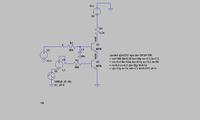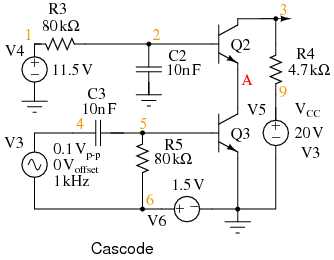fareen
Full Member level 3
hello,
i'm designing a bjt cascode for my electronics lab i need sum help.
i took the circuit from the following link .i simulate it on lt spiece the gain obtained from graph is 4.2 but calculations show a much bigger gain like in thousands i can not understand the error??
The cascode amplifier : BIPOLAR JUNCTION TRANSISTORS

---------- Post added at 11:35 ---------- Previous post was at 11:07 ----------
the calculated gain is the factor of beta but the its quite low,why??/
i'm designing a bjt cascode for my electronics lab i need sum help.
i took the circuit from the following link .i simulate it on lt spiece the gain obtained from graph is 4.2 but calculations show a much bigger gain like in thousands i can not understand the error??
The cascode amplifier : BIPOLAR JUNCTION TRANSISTORS

---------- Post added at 11:35 ---------- Previous post was at 11:07 ----------
the calculated gain is the factor of beta but the its quite low,why??/
